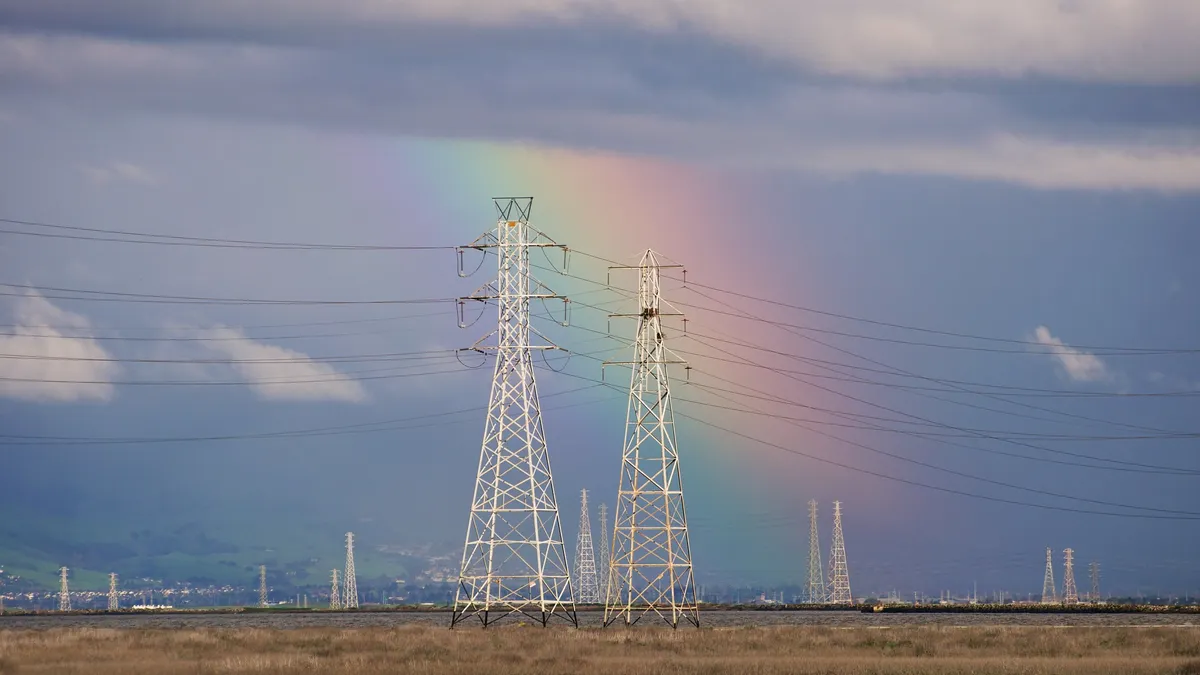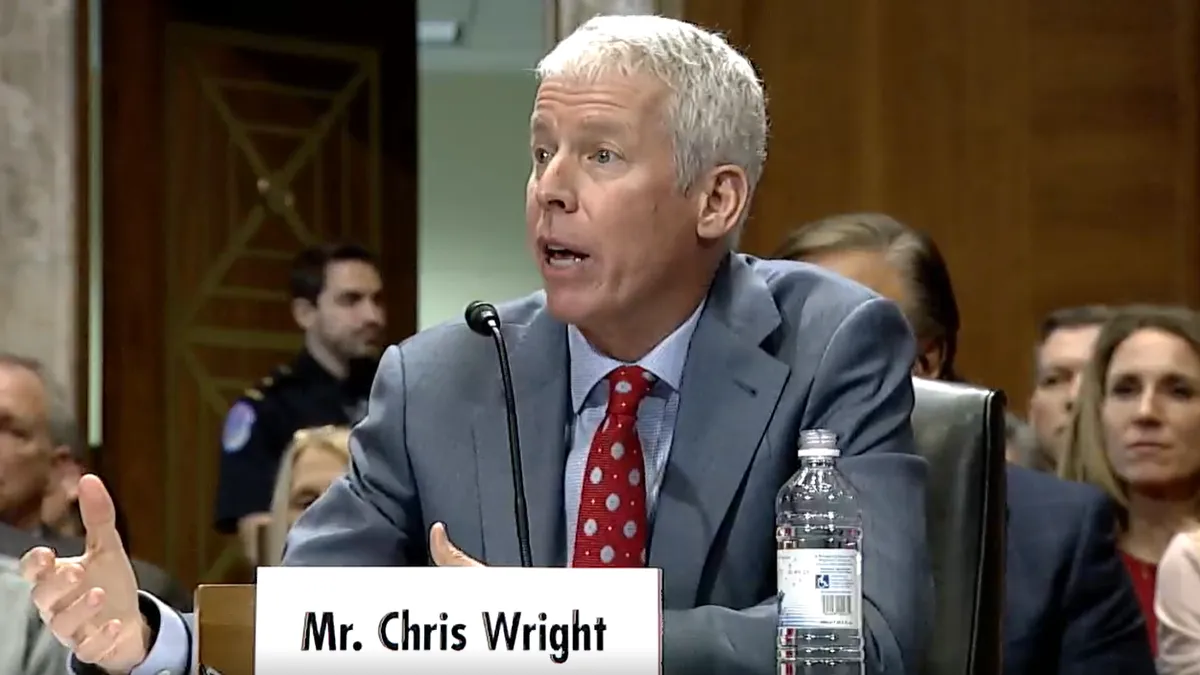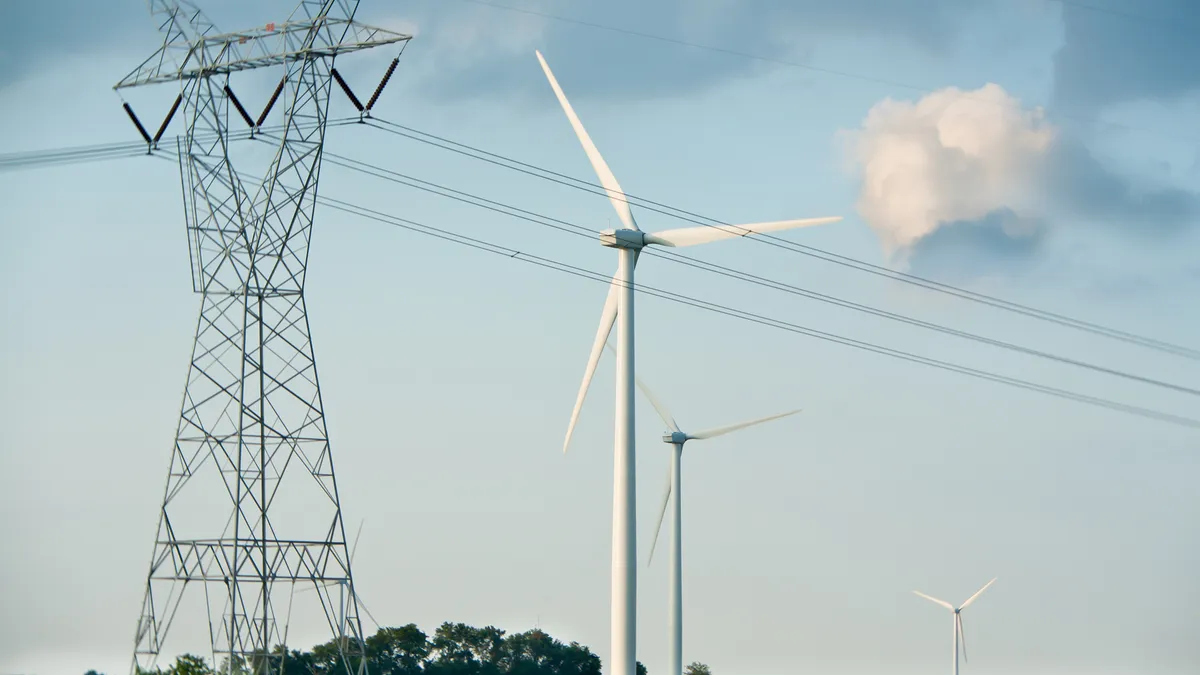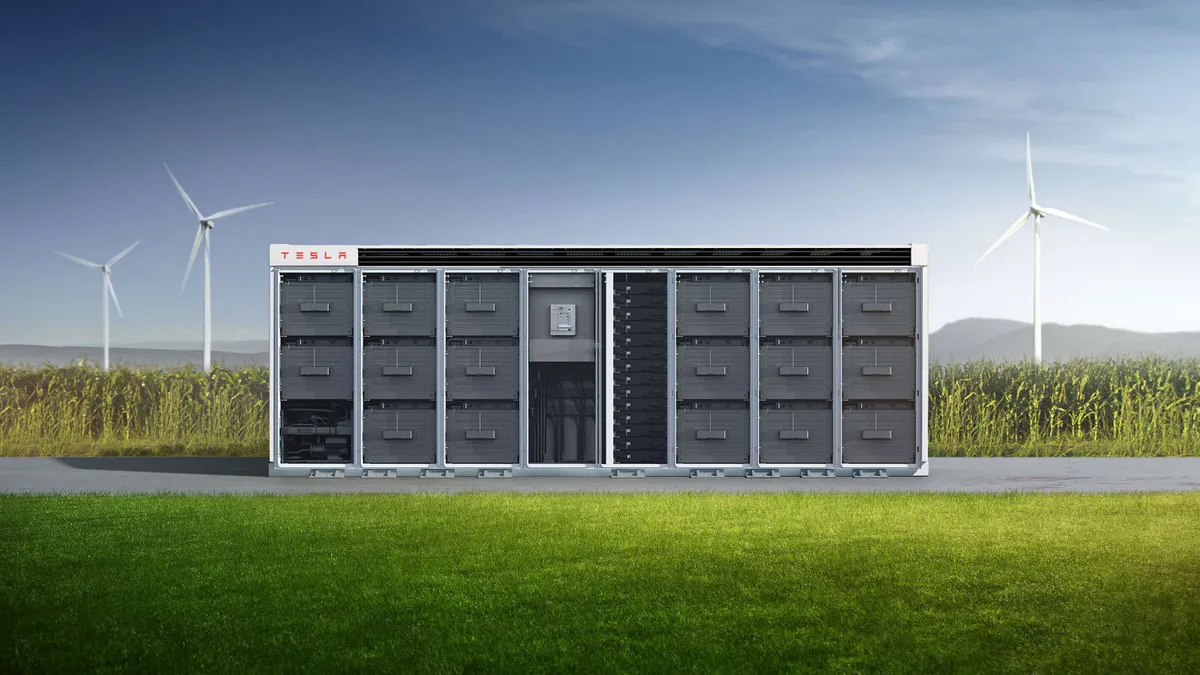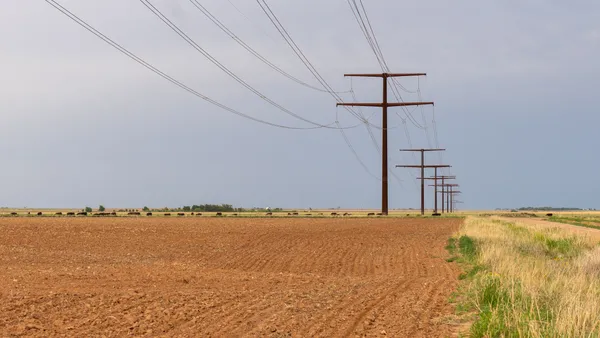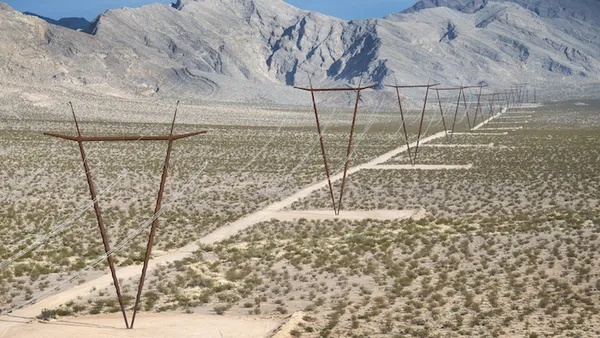The day the lights go out in Hollywood may come this summer, the top California energy agencies say.
As a result of the worst natural gas leak in U.S. history, the electricity supply in the Los Angeles region could be threatened for two weeks this summer, according to reports prepared by California utility regulators, the grid operator, the state energy office and the city's municipal utility.
Beginning last October, a leak at the Aliso Canyon natural gas storage facility near the town of Porter Ranch emitted over 97,000 metric tons of methane, forcing evacuation of more than 5,700 families before being stopped in February.
The leak reduced Aliso Canyon's gas stores to less than 20% of its capacity, which could spell trouble for the 17 natural gas generators served by the facility if electric demand is high, according to the "Aliso Canyon Risk Assessment Technical Report."
That report, prepared by analysts at the California Public Utilities Commission (CPUC), California Energy Commission (CEC), California Independent System Operator (CAISO), and the Los Angeles Department of Water and Power (LADWP), warned that "that if no gas can be withdrawn from Aliso Canyon during the coming summer months, a significant risk exists of natural gas curtailments during up to 16 days this summer."
"These curtailments could interrupt service and affect millions of electric customers during as many as 14 summer days," the report warned.
With Southern California Gas currently testing the facility's 114 wells, even its current reduced holdings are not available to meet unexpected spikes in demand in the area. A variety of factors could provoke the outages, even with moderately increased demand, the agencies reported. They include supply delivery shorts, planned storage and pipeline maintenance work, or unplanned outages.
LADWP gas plants have long relied on Aliso Canyon gas supplies for fast ramping response to demand spikes, General Manager Marcie Edwards said in a statement.
Being without those supplies “introduces the possibility that our power plants will be curtailed from receiving gas—in other words not getting gas when it is needed to create electricity,” she said. “If there is insufficient gas to operate our power plants, electric service interruptions could indeed result.”
In response, the four California agencies released an Action Plan to preserve reliability in the Los Angeles area. It provides a number of solutions to the issues identified in the technical assessment, but critics say the plan fails to pose the hard questions about whether California has, in pursuit of eliminating coal and adding renewables to its grid, become too reliant on natural gas.
The Action Plan
The agencies’ Action Plan, released earlier this month, proposes 18 mitigation measures that, analysts write, “will reduce, but not eliminate, the risk of gas curtailments large enough to cause electricity interruptions.”
The plan classifies the mitigations in five categories: efficient use of Aliso Canyon; tariff changes to drive more efficiency from large gas consumers on the system; better operational coordination; LADWP-specific measures; and general electricity and gas efficiency measures.
Some of the mitigation proposals will entail costs, and some will require regulatory approval. One has caused a debate that must be resolved in the near term. Another has sparked a conversation that Californians may be having on for years.
The biggest single difference in opinion comes over the agencies' call for continued use of the Aliso Canyon facility to help mitigate the potential for blackouts this summer.
“The limited current operations of the facility create a possibility of electricity service interruptions in the coming summer months,” the Action Plan concludes. “The sooner the facility can safely be brought back online, the lower the risk to gas and electric reliability.”
Southern California Gas, which would like to keep operating the facility, said it appreciated that the agencies recognized "the crucial role Aliso Canyon plays in providing reliable energy service to Southern California." But many in California think a return to reliance on Aliso Canyon is not be right choice.
“The high cost of operating the Aliso Canyon storage field, and the latent health and safety risks, are not addressed at all in either of the two documents,” according to a technical assessment prepared by electrical engineer Bill Powers for environmental advocacy group Food and Water Watch. Powers is a frequent critic of southern California utilities and CPUC expert witness.
Because of flaws in the papers, they fail “to justify a conclusion that the Aliso Canyon storage field is necessary for the ongoing supply reliability in SoCalGas service territory,” Powers' report argues.
Other environmental groups echo Powers' concerns.
California's use of natural gas to generate electricity has become a “dependency” that “has negative implications to the state’s economy, public health, and environment,” Tim O’Connor, California climate initiative director at the Environmental Defense Fund recently told a CPUC workshop.
Power markets “that require Aliso canyon to get and remain operational — or else — are taking us in the wrong direction,” he added. They “favor deployment of natural gas, supported by natural gas storage, instead of fostering competition in which natural gas and clean energy resources can compete.”
Aliso Canyon may be, he said, California’s wake-up call.
Mitigation measures
Both sides of the debate largely agree on 17 of the 18 proposed mitigation measures in the Action Plan, most of which have to do with management of California’s system to protect its natural gas supply.
Large generators and natural gas marketers have been able to balance their supply and demand on a monthly basis and with a 10% margin of error. Storage at Aliso Canyon has been used to compensate for supply tied up in that processing. The agencies recommend better price signals and better SoCalGas oversight.
They also recommend better coordination with CAISO on a range of real-time and day-ahead dispatch factors and new compensation and bidding rules that allow markets to respond to new gas balancing methods.
The ISO is testing ways to provide this advance dispatch information, Sr. Public Information Officer Steven Greenlee told Utility Dive. “The process refinement will take a couple of months and then any formal changes must be approved by the Federal Energy Regulatory Commission.”
The ISO's just-released straw proposal outlines potential ways to obtain better natural gas-electric market coordination to address the concerns about limited operations at Aliso Canyon, he added.
Operational improvements are already being developed by SoCalGas and LADWP to develop better rules, procedures, and practices to mitigate gas curtailment events and electricity contingency events, the technical assessment notes.
SoCalGas, CAISO, and LADWP should also develop more specific and clear procedures for managing future curtailments to minimize impacts and submit them for CPUC approval, the agencies say.
Despite a statewide push to prevent pipeline explosions like the one that happened in San Bruno in 2010, SoCalGas should attempt to defer any system maintenance that it can, the Action Plan asserts.
Three mitigations recommended by the Action Plan specifically address LADWP practices. It has already moved to implement them, though they will impose customer costs.
First, it will stop its physical gas hedges, Edwards said. The utility will forego potential price benefits from hedging “in order to lessen our reliance on the weakened gas transmission system.”
Second, it will stop making dispatch decisions on a strictly least-cost basis, Edwards promised. “DWP plans to use resources in less than the most economic way, again, in order to reduce gas burn.”
Finally, it will stop marketing blocks of excess electricity and it will increase its investments in energy efficiency “to again try and reduce gas use,” Edwards pledged.
Debating Aliso Canyon use
Of the 15 bcf of natural gas remaining at Aliso Canyon, 10 bcf was designated for withdrawals to maintain reliability and 5 bcf was held against the possibility of extreme, the Action Plan reports. All 15 bcf is still stored.
If SoCalGas and other customers match thier scheduled gas with actual demand, there are no prolonged heat waves and no unexpected gas system issues, "10 bcf could be enough to meet demand this summer,” the report says.
Planning has not yet begun for the following winter. Based on the heavier demand for natural gas in the winter, maintaining reliability with only 15 bcf at Aliso Canyon “could pose a significant challenge,” the Action Plan adds.
Some ability to reinject new supply “is likely to occur at some point this summer but it remains unclear how much SoCalGas would be able to reinject or how the operating characteristics of the field may change the maximum daily withdrawal capability,” the Plan reports.
The agencies nevertheless propose allowing SoCalGas to use the 15 bcf this summer to prevent electricity interruptions. They also propose that SoCalGas bring small groups of wells at the facility back into service as they pass safety and integrity tests performed by independent experts.
While he agrees with most of the mitigation measures, Powers says the state agencies shouldn't look to tap the gas currently stored at Aliso Canyon for this summer.
“The day the leak in Well SS25 was sealed, the state agencies began saying there would be blackouts this summer if this fourth storage field is unavailable,” Powers said. “I do not think there is a significant possibility of blackouts this summer if the system is managed properly by following all the mitigation measures, but not drawing on the natural gas stored at Aliso Canyon.”
Three other natural gas storage facilities serve the Greater Los Angeles region and Aliso Canyon’s aging, increasingly-leaky infrastructure is an embarrassment, he added.
There is, Powers said, adequate supply in pipeline delivery capacity and the other storage facilities to meet the last decade’s highest peak demand.
“The agencies general approach is around the predetermined answer that they want Aliso Canyon back on line as soon as possible,” Powers said. SoCalGas has “long used the storage to cover up cavalier management. With it, they can deliver to customers even if management fails to balance supply and demand.”
Powers’ analysis attempts to refute the findings of the Action Plan “without considering the realistic current operating constraints of the existing gas and electricity systems in the greater Los Angeles area,” a reply from the agencies asserts.
His analysis “fails to acknowledge the distinct possibility of electrical outages in Southern California this summer if utilization of Aliso Canyon gas supplies and other mitigation measures are not implemented,” the agency reply adds.
If the agencies and SoCalGas had put the 17 other mitigation strategies into practice earlier, there current reliability situation could have been avoided, Powers told Utility Dive, but there is “no need to employ the eighteenth measure” of using the 15 bcf of natural gas now stored in Alison Canyon.
Because of informational flaws detailed in his paper, including the availability of natural gas stored at the nearby Honor Rancho facility, “the regulatory agencies and SoCalGas have failed to make their case that new injections to the Aliso Canyon storage facility are needed to prevent a gas shortage or that electrical blackouts are imminent,” Powers concludes.
He and the joint agencies are actually very much in agreement, he noted. “If they don’t do the first 17 mitigation measures, Southern California is potentially in danger of blackouts.”
Conservation and efficiency measures
The final mitigation measures in the Action Plan are conservation and efficiency programs that target reductions in natural gas and electricity use.
The ISO’s Flex Alert program that calls customers’ attention to the need for electricity usage reductions should be used “as long as Aliso Canyon is not fully available,” the Action Plan recommends. The Action Plan also calls for a similar natural gas usage reduction programs to be initiated by SoCalGas, LADWP, other local utilities, local governments, and state agencies.
The CPUC specifically directs SoCalGas and Southern California Edison (SCE) to prioritize savings through their Energy Savings Assistance (ESA) Program for in low-income communities affected by the Aliso Canyon Gas Storage Facility leak.
Finally, the Action Plan calls for significant effort to expand Demand Response (DR), Energy Efficiency (EE), and solar hot water programs.
DR programs should especially target residential and non-residential air conditioning use and electricity consumption by large commercial and agricultural customers and customers most impacted by the Aliso Canyon leak, it says. Rebates should be available to customers who both use smart programmable thermostats and enroll in an SCE DR tariff or load control program.
Efforts to expand and re-prioritize EE by SCE, SoCalGas, and LADWP should focus on managing usage in the coming summer and winter, the Action Plan recommends. Finally, rebates for solar water heating systems to replace or augment gas water heaters should be structured to drive nearer term activity.
Despite these last recommendations, SoCalGas and LADWP statements suggest they remain committed to natural gas.
“Natural gas is a necessary bridge fuel while power agencies across the state work to integrate more renewable energy into the power system,” Edwards said in her statement.
As California’s renewables increase, “the need for locally stored natural gas will continue to grow because natural gas is an important safety net, underpinning renewable sources, like solar and wind, to ensure an uninterrupted power supply,” SoCalGas Communications Manager Melissa Bailey agreed in a statement to Utility Dive.
Future natural gas usage
A lot of California policymakers are concerned because the Action Plan represents the status quo, EDF's O’Connor told the joint agencies workshop. Better use of gas, inspecting the field, more EE and DR are all great, he said, but they are built into “the same framework that got us here.”
Though Aliso Canyon presents a short term challenge, he added, “what we need, in the short term, is a plan that immediately starts us down a different road while we fix the system.”
Though natural gas is an important part of the energy mix, it is not the key to more renewables or better reliability, O’Connor said. “We cannot and should not exclusively rely on natural gas infrastructure to provide the system balancing and reliability services attendant to a more renewable dynamic grid.”
The Action Plan’s modest refinements to California’s electric market design are welcome but its expansion of DR and EE are more forward-thinking because those resources can be deployed immediately, O’Connor asserted.
The foremost shortcoming of the Action Plan is that its focus is “gas volume availability,” O’Connor said. If the concern is reliable electricity delivery, the agencies should focus on electricity and propose “market signals and designs” that will support more DR and EE.
Market design should include time of use rates and allow “all viable resources to compete in and earn revenues from providing balancing and reliability services,” he said. If the agencies want consumers to change their electricity usage, he said, they should focus on “new electricity rates and structures that reward energy users for shifting energy use.”
California's energy leaders are starting to say similar things.
“The near term challenge is to reduce Southern California’s reliance on Aliso Canyon,” CEC Chair Robert B. Weisenmiller noted to Utility Dive by email. “And there is a long-term trend to reduce our reliance on natural gas.”






